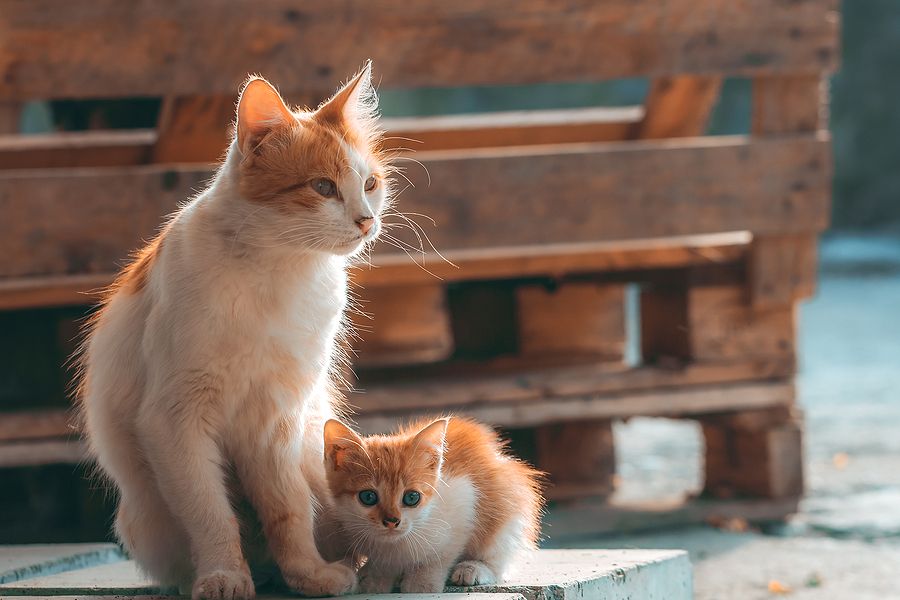It’s a well-known saying that a cat has nine lives. However, the reality is that your feline pet’s life can be divided into four stages – kitten, young adulthood, mature adult, and senior. Each time of life comes with different behaviors and often changes in health. The following is some information on your cat’s life stages.
Stage 1: Kitten (Birth to 1 Year)
This is when you need to check for any problems that may have been present from birth. It’s also the time to pay attention to neutering, diet, microchipping, vaccination, and parasite control.
A kitten has a very high play drive, so you need to ensure that the physical and social environment of your home and family meets your kitten’s needs. If you can’t cope with a kitten climbing up your drapes or knocking your knickknacks off shelves, you probably should get an adult cat.
Kittenhood is the ideal time for carefully positive introductions to the following:
- People and other pets
- The cat carrier and visits to the vet
- Nail trimmings
- Coat brushing
Stage 2: Young Adult (1 year to 6 years)
Your cat’s life stages will continue on into young adulthood. Although your cat may have slowed down a bit since kittenhood, your young cat will still be very active and into exploring everything. So, continue to pay attention to the indoor living environment and outdoor space (if your cat goes outdoors). If your cat is allowed outside, they are likely to be an active hunter, so continued attention to vaccination and parasite control is important.
- Common health issues for junior cats include infectious diseases, dental problems, cystitis, intestinal issues, and heart disease.
Stage 3: Mature Adult (7 Years to 10 Years)
Your cat will tend to become less playful and more likely to gain weight. You might assume that your cat is still young and healthy, but much can change in just one cat year (equivalent to four human years). Therefore, your cat will benefit from regular veterinary checkups to help prevent any medical issues from arising or getting worse, such as:
- Constipation
- Diabetes
- High blood pressure
- Hyperthyroidism
- Kidney disease
Stage 4: Senior (Over 10 Years)
When your cat becomes a senior, the human equivalent is approximately 60 years. Your aging cat may exhibit some alterations in behavior, e.g., becoming more vocal, not using the litter box appropriately, and the inability to go up and down stairs easily. At this stage, changes such as decreased activity and/or increased sleeping may not be glaringly obvious, so don’t simply think, oh, it’s just old age and ignore them.
Your senior cat should visit the vet at least every six months because much could happen in just one year. A veterinarian exam can catch any health problems early before they become more advanced and possibly more costly to treat.
Your Cat’s Life Stages: Conclusion
It’s important to keep your cat healthy and happy throughout each stage of life. As a member of your family, your cat deserves the best possible attention. With proper care, your cat will have a long life, but when the end comes, the best way to honor the years of pleasure and friendship they have provided is a caring and sympathetic pet burial or cremation.
- Midlands Pet Care, a family-owned and operated company, will honor your cat with the best in burial or cremation. We also have a wide range of memorials to keep your cat in your memory for all the future stages of your life. Please contact us for more information.

